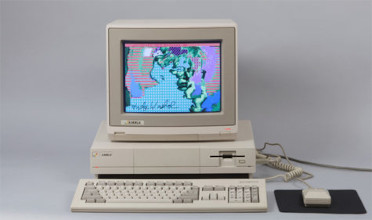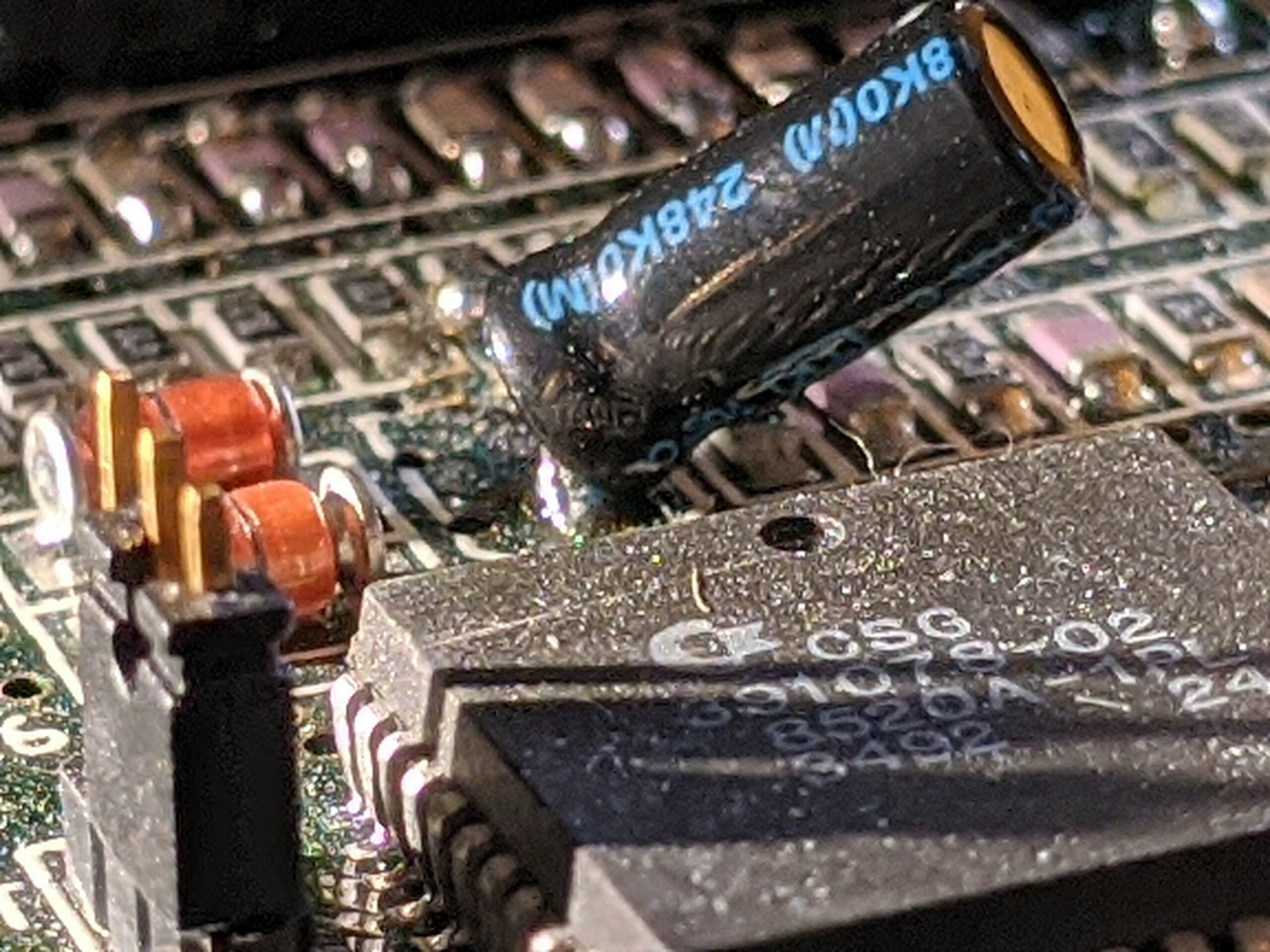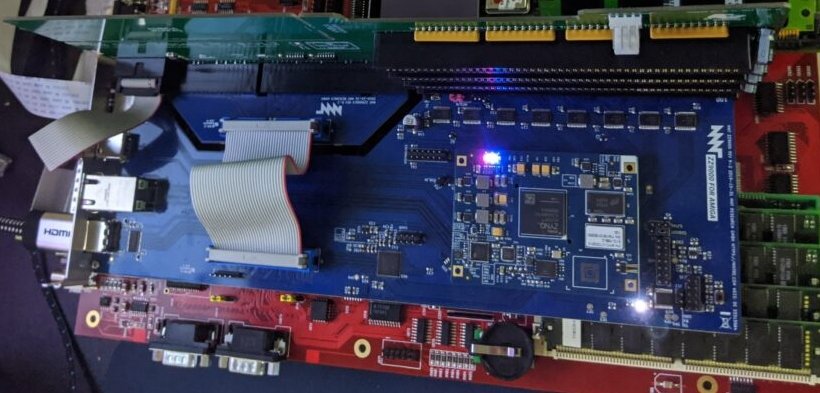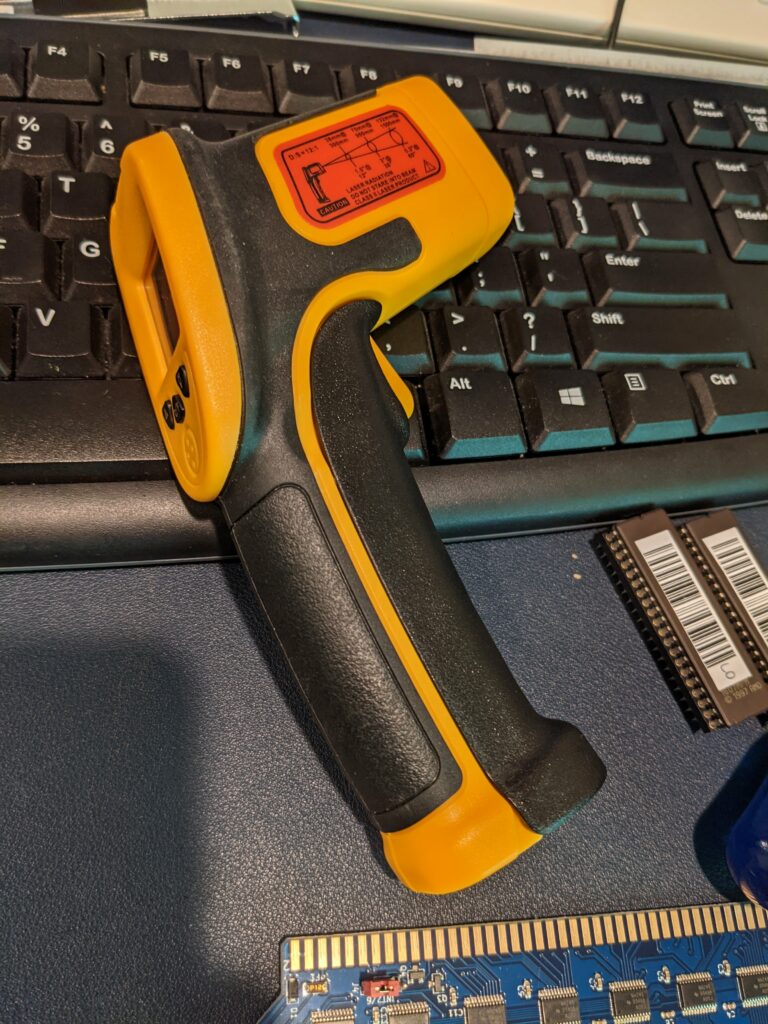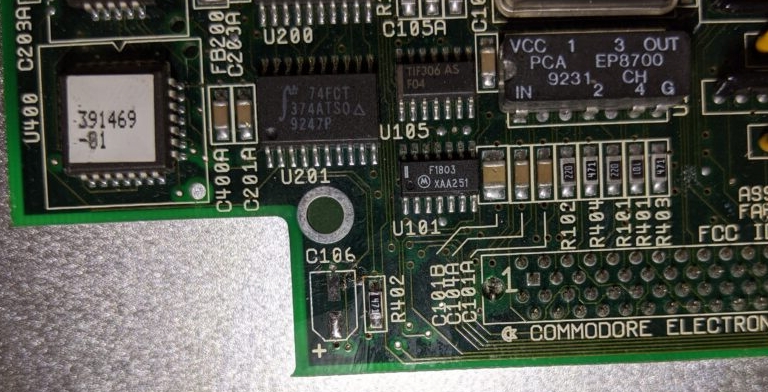… and even more obviously, everybody needs a second recap in their quarantined life. After the recap of my A3640 went surprisingly well, and even ripped off pads were replaced and reconnected, I felt confident enough to do a board that’s a little bit bigger and a little bit more involved than that poor little 040 accelerator: My Amiga 4000.
As my Amiga 3640 processor card, the Amiga 4000D board was previously recapped in a job that replaced the SMD capacitors with their through-hole siblings.
I know, I know, another recap story, REALLY? Haven’t we heard enough of that already? Let’s just twist the caps off, the recap trolls on Facebook will tell you. Come on, folks. You are lucky enough to have the chance to operate some 30 plus year old machinery. Think about it for a second. What else that you have today will still be good in thirty years from now? Your iPhone or Android phone? Certainly not. Your MacBook? Your Chromebook? This stuff is going to be in the landfill and long forgotten in much less time. So PLEASE, treat these machines carefully. They are witnesses of a very different time, when reality consisted of the cold war and 1200 baud modems. If you have doubt about what to do, let someone help you. There is a friendly community of folks keeping these machines alive. And if you want to do it yourself, practice with something else first. Something that is ok to break. I heard there are a lot of cheap Ataris out there (just kidding!!)
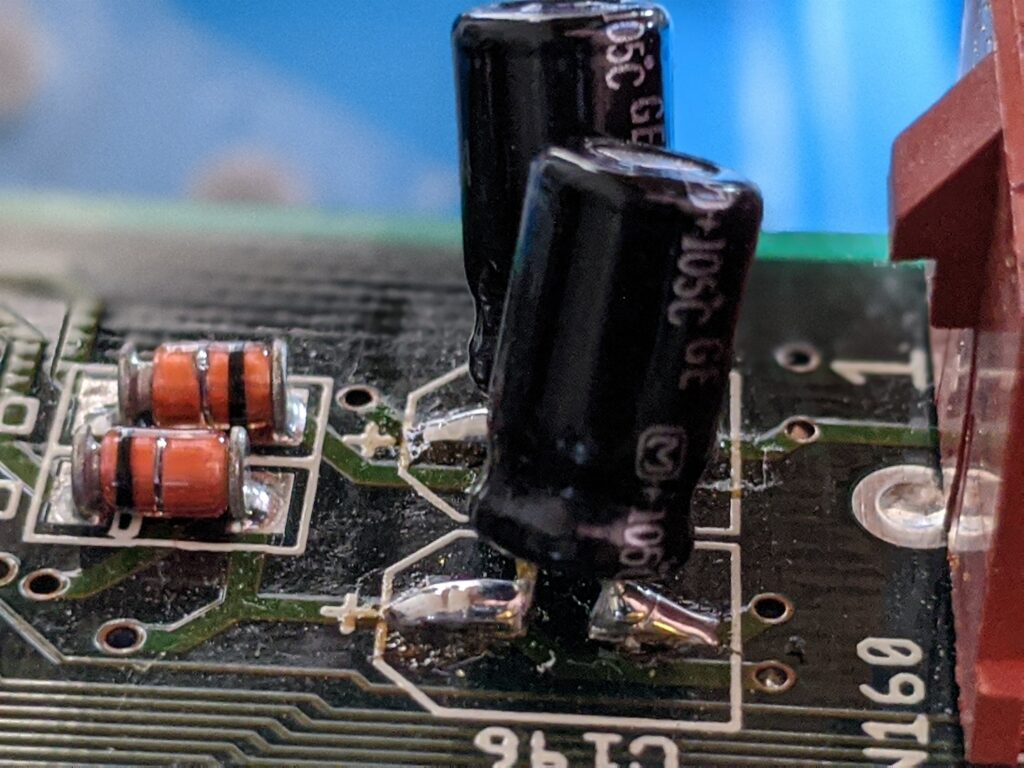
It’s not visible in the picture, but many of the legs of these caps were not attached to the board anymore

